P. Marlin June 2014
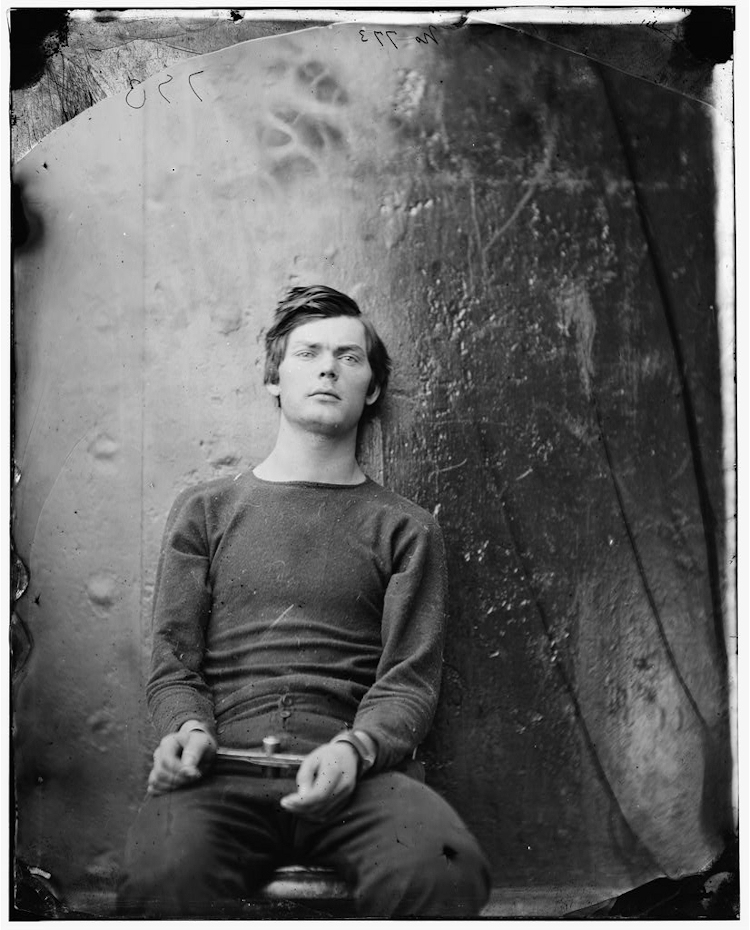 Lewis Thornton Powell (Payne) at Washington Navy Yard, D.C. in sweater, seated and manacled, April 1865
Lewis Thornton Powell (Payne) at Washington Navy Yard, D.C. in sweater, seated and manacled, April 1865
Library of Congress
Lewis Thornton Powell, also known as Lewis Paine or Payne, was born April 22, 1844 in Randoph County, Alabama to Patience Caroline Powell and George Cader Powell. When four years old, Lewis Powell's family moved to Georgia where they would remain for eleven years, then forced to sell the family farm, they moved to Belleville, Hamilton County, Florida.
At the outbreak of the Civil War, seventeen year old Powell left home and enlisted in the 2nd Florida Infantry, Company I in Jasper, Florida (Civil War Record - above image). Powell was wounded at the Battle of Gettysburg and taken prisoner. He was transferred to the United States Army Hospital in Baltimore where he escaped and enlisted in Colonel John Singleton Mosby's Virginia cavalry in the fall of 1863. While serving in the Mosby's Rangers, Powell began his involvement with the Confederate Secret Service and it was through a confederate operative, David Parr, that Powell met John Surratt who would later introduce him to John Wilkes Booth.
This group of "Lincoln conpirators" would include Lewis Thornton Powell, Mary Surratt, David Herold, George Atzerodt and John Wilkes Booth. The conspirators planned to kidnap the President, Abraham Lincoln, but the plan would soon develop into a more sinister plot to assassinate the President and high government officials, in the hopes of throwing the federal government into chaos. Powell's assigned task was to enter the home of Secretary of State William Seward and kill him, but on the night of the planned attack, April 14, 1865, John Wilkes Booth was successful in assassinating the President, while Powell's brutal attempt to kill Secretary Seward went awry. Seeming confused after the attack, Powell was caught and arrested at the home of fellow Lincoln conspirator, Mary Surratt.
Four of the Conspirators, Mary Surratt, David Herold, Lewis Payne Powell and George Atzerodt were arrested, tried and convicted for their part in the Lincoln conspiracy, and sentenced to death. The prisoners were held at the penitentiary building on the old Arsenal grounds in Washington D.C. While the gallows were being built, four graves, each 7 by 3 feet wide and 4 feet deep, were dug at the same time. After the execution, the condemned would be buried in those graves, at the foot of the gallows.
The night before the execution, Powell would sleep about three hours and then conversed with his advisors on religious topics through the next morning, "He appeared to be sincerely repentant, and in his cell shed tears freely." As of 10:00am the morning of the execution, no relatives or friends had been to see Powell. The prisoners were fed breakfast, and none ate except for Powell, who ate heartily.
At twenty-six minutes past 1:00pm on July 7, 1865, the signal was given and the large blocks supporting the uprights were knocked out and the four bodies would hang suspended. They were allowed to hang 20 minutes at which time they were pronounced dead. Laid out in the coffins, each one was marked with the name of the party, and placed in the previously dug graves. The friends and family of Surratt, Herold and Atzerodt made application for the remains, but the authories declined to grant the requests.
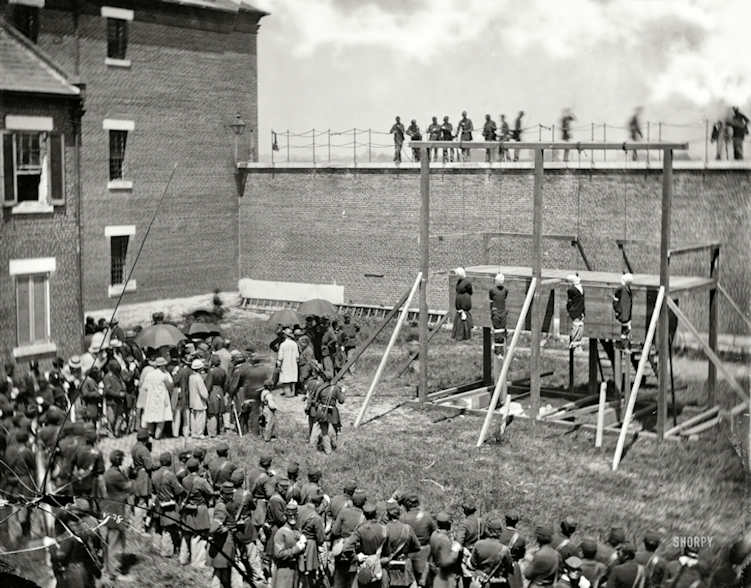 The Lincoln conpirators hang at the Washington Arsenal on July 7, 1865.
The Lincoln conpirators hang at the Washington Arsenal on July 7, 1865.
John Wilkes Booth, lead conspirator and assassin of the President, was shot and killed trying to make his escape
(a few photos from his escape route).
Wilkes would also be buried at the Arsenal grounds inside the old penitentiary building as described in the excerpt below from The
Evening Star, February 8, 1869.
"The burial of booth was also near there (near the location of the other conspirators on the grounds); that is,
inside the old penitentiary building, near the main door of the Warden's residence. The burial of Booth was quietly made,
in the presence of Secretary Stanton, General Lafayette C. Baker and two of his
officers, and Col. Benton, Commandant of the
Arsenal; and after the grave had been filled and a portion of the bricks relaid over it, the windows of the wareroom were boarded
and the door locked, Secretary Stanton taking the key."
In 1867, the War Department decided to tear down a portion of the Washington Arsenal where the bodies of Surratt, Herold, Powell and Atzerodt were buried. On October 1, 1867, the coffins were disinterred and reburied in the warehouse known as No. 1 (also referenced as building No.2) on the Arsenal grounds, with the bodies being placed under the flagging.3
In 1869 President Andrew Johnson agreed to release the conspirator's bodies to the families for burial. The following newspaper accounts of the time describe each conspirator's disinterment from the grounds and in some cases, reburial.
Tracing Powell's body after 1870 is difficult. It seems certain, however, that Powell's skull became separated from the body and ended up in the Army's Medical Museum which was housed in Ford's Theater and documented in their catalog (above image) as "skull of white male hung at Washington D.C. for the attempted assassination of Secretary of State W.H. Seward."4 In 1898, the Army Medical Museum gave the skull to the Smithsonian Anthropology Department where it was inadvertently mixed in with a collection of Native American bones and forgotten for nearly a hundred years.
In January 1992, Powell's tagged skull was discovered by a worker at the Smithsonian Institution. The skull was claimed by a relative of Powell's living in Florida, but before it was released, the FBI scanned the skull for future use.
In a 1992 article by the Orlando Sentinel, Mystery Still Shrouds Story of Lewis Powell 1
Tom Harney, a Smithsonian spokesman, states:
"Photographs of the 6-foot-4-inch, muscular Confederate soldier hanged as one of the Lincoln conspirators will be superimposed
over a computer image of Powell's skull to create a near lifelike image." Harney continues, "Smithsonian scientists - who do the
same thing to help the FBI identify crime victims - use computerized tomography scans to keep an electronic archive of thousands of
skulls and bones for research. With the help of several historians, Lincoln researchers and journalists, curators have tracked some
of the skull's history.
President Andrew Johnson decided to release the bodies, said historians Mike Kaufman and James Hall. All but
Powell's were claimed by family members. Powell's body was later removed and buried at a Washington cemetery. The cemetery was part of a
city square sold to a developer in the early 1880s. The city used the money for schools. Bodies were dug up and relatives were notified
that they could claim the bodies.
Unidentified bodies were boxed. Researchers believe Gawler Funeral Home had the contract to remove the bodies. A.H. Gawler's name
appears on 1885 Army Medical Museum documents about a skull stenciled with the numbers 2422 and labeled with a ''P'' and the
notation ''criminal, executed by hanging.'' In the mid-to late 1860s, Gawler was a clerk for the surgeon general. Researchers speculate
that Gawler kept the Powell skull as a souvenir for 20 years before giving it to the Army's museum. The Army gave the skull to the
Smithsonian on May 7, 1898."

Above image: Marietta Daily Journal June 12, 1994
I guess we will never know how Lewis Powell's body became separated from his skull, but in November 1994, the skull was finally laid to rest in a small, velvet-lined, mahogany casket near the grave of Powell's mother, Patience Caroline Powell. I was able to visit the Geneva, Florida Cemetery in 2012 and took the following photos:
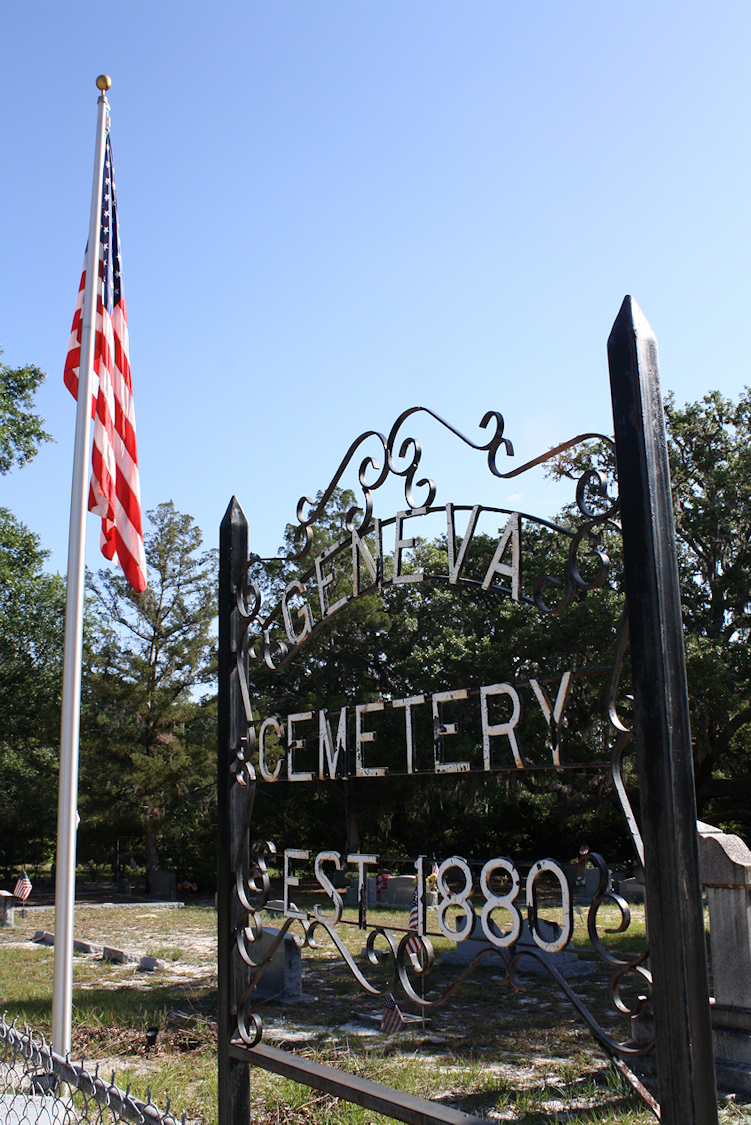 The entrance to Geneva Cemetery.
The entrance to Geneva Cemetery.

Lewis Powell's grave, his mother, Caroline Powell, is buried just above him (as seen in this photo).
Lewis' mother's tombstone is inscribed: In Memory of Caroline Powell, Wife of George, Born April 23, 1811
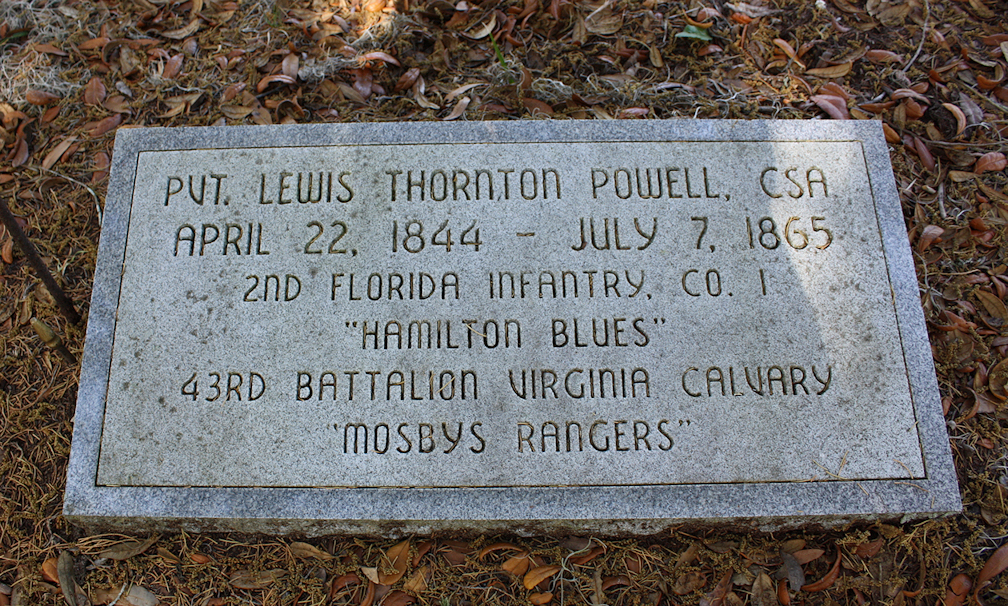
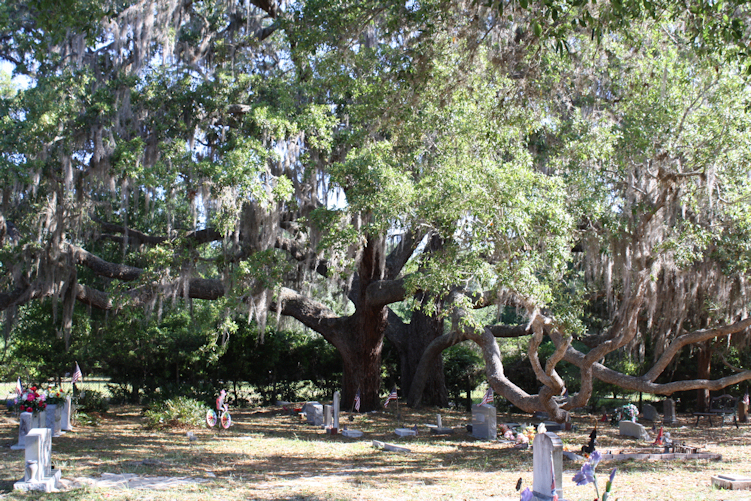 A beautiful oak tree in the cemetery
A beautiful oak tree in the cemetery
1
Mystery Still Shrouds Story Of Lewis Powell, Orlando Sentinel, July 5, 1992, by Jim Robison of The Sentinel Staff
2Civil War Connections of Camden County, NJ
3 The
National Republican, February 9, 1869
4 Found on this website:
Boothie Barn